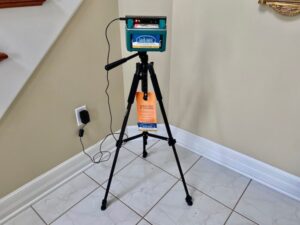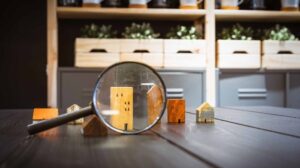
Home inspection red flags serve as crucial warnings during property assessments, guiding potential buyers away from costly mistakes. As you navigate the intricate world of real estate, these indicators can help you identify underlying problems that might not be immediately visible.
Understanding these red flags is essential to ensure your investment is sound and to maintain the long-term value of your home. From structural issues to potential environmental hazards, being aware of what to look for can save you significant time and money down the line.
Understanding Home Inspection Red Flags
Home inspections are a crucial step in the home-buying process, as they reveal potential issues with a property that could lead to significant financial implications down the line. Recognizing red flags during a home inspection can save buyers from unforeseen expenses and help them make informed decisions about their purchase.Common home inspection red flags are indicators of possible problems that may require further investigation.
These issues range from visible damage to more concealed signs that may not be immediately apparent. Identifying these flags can be essential in assessing not only the current condition of the home but also its long-term value.
Common Home Inspection Red Flags
Several key indicators can signal trouble during a home inspection. Being aware of these can help prospective buyers gauge potential risks. Here are some of the most significant red flags to watch for:
- Water Damage: Look for stains on ceilings, walls, or floors, as well as mold or mildew odors. These signs can indicate leaks or poor drainage systems.
- Structural Issues: Cracks in walls, uneven floors, or doors that stick may suggest foundational problems that could be expensive to repair.
- Electrical Issues: Outdated wiring, ungrounded outlets, or flickering lights are red flags signaling potential fire hazards or the need for significant electrical upgrades.
- Pest Infestations: Evidence of rodents or insects, such as droppings or chewed wood, can indicate infestations that may require costly extermination and repairs.
- Roofing Problems: Missing shingles, sagging areas, or signs of leaks can indicate the need for roof repairs or even a full roof replacement.
Signs of Structural Problems
Structural problems can be among the most serious issues a home can face, often leading to costly repairs and safety concerns. Here are some signs that may indicate structural problems:
- Foundation Cracks: Horizontal or wide cracks in the foundation can signal serious structural issues that should be evaluated by a professional.
- Wall Cracks: Vertical cracks larger than a quarter-inch may indicate settling or shifting of the home, which can affect overall stability.
- Uneven Floors: Floors that slope or are uneven might indicate foundation problems or rot in the supporting beams.
- Ceiling Height Variations: Changes in ceiling height may signify structural settling or shifting that necessitates further inspection.
Significance of Hidden Red Flags
Hidden red flags can significantly affect the long-term value of a home. These issues are often concealed and may not be visible during a standard inspection. It is essential to consider the impact of these hidden problems on the home’s value and the homeowner’s investment.
- Improper Drainage: Poor drainage can lead to significant water damage over time, ultimately decreasing property value.
- Unpermitted Modifications: Structural changes made without permits can lead to legal troubles and might need to be reversed, which can be costly.
- Old HVAC Systems: An outdated heating and cooling system may seem functional at first but can lead to high energy costs and replacement needs in the near future.
- Basement Issues: Hidden leaks or mold in the basement can compromise home safety and affect air quality, leading to health concerns.
“Identifying red flags early can be the difference between a wise investment and a costly mistake.”
Importance of Home Inspections
Home inspections play a crucial role in the real estate buying process, serving as a safety net for potential homeowners. They provide buyers with an in-depth evaluation of a property, helping to uncover underlying issues that may not be visible during a casual walkthrough. This insight allows buyers to make informed decisions and protects their investment in the long run.Home inspections can save significant amounts of money over time by identifying problems before they escalate.
For instance, addressing a minor plumbing issue early can prevent costly water damage later on. By investing in a home inspection, buyers can negotiate repairs or price reductions, ultimately leading to substantial savings.
Types of Home Inspection Services
Different types of home inspection services cater to various aspects of property evaluation, each serving a distinct purpose. Understanding these services can help buyers choose the right inspection for their needs.
- General Home Inspection: This is the most common type of inspection that covers the overall condition of the home, including structural integrity, electrical systems, plumbing, roofing, and HVAC systems. It provides a comprehensive overview that is essential for any potential buyer.
- Pest Inspection: This service focuses on identifying infestations of termites, rodents, and other pests that can cause damage to the property. A pest inspection is critical, especially in areas prone to infestations, as it can save homeowners from significant repair costs.
- Radon Inspection: Radon is a naturally occurring gas that can be harmful in high concentrations. A radon inspection tests for the levels of this gas in the home, providing peace of mind and safety for occupants.
- Mold Inspection: Mold can pose serious health risks and damage to a home’s structure. A mold inspection checks for visible mold growth, moisture issues, and air quality, ensuring a healthy living environment.
- Roof Inspection: This inspection focuses specifically on the roof’s condition, assessing for leaks, shingle wear, and overall structural soundness. A roof inspection can prevent future extensive repairs or replacements.
- Electrical Inspection: This inspection evaluates the electrical systems in the home to ensure they are up to code and functioning safely. It identifies potential hazards, making it essential for the safety of residents.
“Investing in a home inspection is an investment in your peace of mind.”
Common Issues Found During Inspections

Home inspections are vital for identifying potential problems that could turn into costly repairs down the line. By being aware of common issues, buyers and homeowners can make informed decisions about property investments. This section dives into the typical challenges found in plumbing and electrical systems, the significance of checking for environmental hazards, and the risks associated with poor drainage.
Plumbing and Electrical System Issues
Both plumbing and electrical systems are crucial components of any home and are frequently scrutinized during inspections. Common plumbing issues include leaks, corrosion, and outdated piping materials, which can lead to water damage, mold growth, and increased utility bills. Similarly, electrical inspections often reveal issues such as improper wiring, overloaded circuits, and outdated electrical panels. These problems can pose serious safety hazards, including fire risks and electrocution.
Addressing these issues promptly not only enhances the safety of the home but can also improve its value.
Mold, Pests, and Environmental Hazards
Checking for mold, pests, and other environmental hazards is essential during a home inspection. Mold can develop in damp areas and lead to serious health concerns, particularly for individuals with respiratory issues. The presence of pests, such as termites or rodents, can compromise the structural integrity of the home and indicate underlying moisture problems. Inspectors often look for signs of past infestations or mold growth to ensure that the property is safe for habitation.
Understanding these risks is crucial in determining whether further action is needed.
Poor Drainage Consequences
Poor drainage around a property can lead to extensive damage over time. Insufficient drainage systems can result in water pooling around the foundation, causing erosion, cracking, and even flooding. This not only affects the structural integrity of the home but can also lead to costly repairs if the foundation is compromised. For example, a homeowner in a rainy region noticed persistent water in the basement after heavy rains, which was traced back to inadequate gutters and downspouts.
Addressing drainage issues proactively can save homeowners from significant financial burdens in the future.
Home Furniture Considerations
Selecting the right furniture for a home with identified red flags is crucial not just for aesthetics but also for functionality and durability. Homeowners should consider a variety of factors to ensure that their furniture choices enhance the living space while accommodating any potential issues that may arise from the home’s condition.Furniture arrangement plays a significant role in how space is perceived, especially in homes with certain deficiencies.
Thoughtfully placed furniture can create an illusion of larger spaces or provide comfort despite structural challenges. It’s essential to think about how each piece interacts with the overall layout of the home and the red flags identified during inspections.
Tips for Selecting Complementary Furniture
Choosing furniture that works well in homes with identified red flags requires careful consideration. The following criteria can help homeowners make informed decisions:
- Material Durability: Prioritize materials that withstand wear and tear, such as leather or high-quality synthetic fabrics, especially in homes with moisture issues.
- Style Consistency: Select furniture styles that align with the existing architecture of the home to create a cohesive look that distracts from any imperfections.
- Scale Appropriateness: Choose furniture that complements the size of the room. Oversized pieces in small rooms can make spaces feel cramped, while too-small furniture can make them feel empty.
Furniture Arrangement and Space Perception
The arrangement of furniture can significantly alter the perception of space in a home. Proper placement can lead to a more open and inviting atmosphere, while poor arrangement can underscore existing red flags. Here are some key considerations:
- Focal Points: Arrange furniture to draw attention away from problematic areas, creating visual interest in other parts of the room.
- Flow and Accessibility: Ensure that pathways are clear and that the arrangement allows for easy movement, which is especially important in homes with structural deficiencies.
- Zone Creation: Use furniture to create distinct areas within a space, which can help mask issues and make the home feel more organized.
Choosing Durable Furniture
Selecting furniture that can withstand maintenance challenges is vital for long-term satisfaction. Here are some criteria to consider:
- Resilience to Wear: Opt for furniture designed for high-traffic areas, such as reinforced frames and stain-resistant fabrics.
- Maintenance Requirements: Consider how easy it is to clean and maintain the furniture, especially in homes prone to dust or moisture buildup.
- Multi-functionality: Look for pieces that serve multiple purposes, such as storage ottomans or extendable tables, adding value without taking up extra space.
“The right furniture can not only enhance the beauty of a home but also provide practical solutions to its inherent challenges.”
Green Living and Home Inspections
As the conversation around sustainable living grows, the importance of assessing eco-friendly homes during home inspections becomes paramount. Eco-friendly homes, built with sustainable materials and energy-efficient systems, not only contribute to a healthier environment but also provide significant benefits over traditional homes. Home inspections play a crucial role in identifying these benefits and any potential red flags that could affect energy efficiency and overall sustainability.
Benefits of Eco-Friendly Homes versus Traditional Homes During Inspections
When comparing eco-friendly homes to traditional homes, several advantages stand out. Eco-friendly homes typically incorporate energy-efficient appliances, sustainable materials, and smart home technologies. Here are some key benefits observed during inspections:
- Lower Utility Bills: Eco-friendly homes often feature energy-efficient systems and appliances, leading to significant savings on electricity and water bills.
- Improved Indoor Air Quality: Many green homes utilize non-toxic materials and ventilation systems that enhance air quality, reducing allergens and pollutants.
- Higher Resale Value: Sustainability has become a desirable trait in real estate, often resulting in a higher market value for eco-friendly homes.
- Reduced Carbon Footprint: These homes are designed to minimize energy consumption and waste, contributing positively to the environment.
Red Flags Related to Energy Efficiency
During a home inspection, it’s essential to identify specific red flags that could indicate energy inefficiencies. Here are common issues to look for:
- Outdated Insulation: Insufficient or old insulation can lead to heat loss or gain, significantly impacting energy efficiency.
- Old Windows: Single-pane or poorly sealed windows can cause air leaks, increasing heating and cooling costs.
- Inefficient HVAC Systems: Older heating, ventilation, and air conditioning systems are often less efficient and may require replacement.
- Inadequate Sealing: Cracks and gaps in walls, doors, and foundations can lead to drafts and energy loss.
Importance of Assessing Sustainable Practices in Home Renovations
When homeowners undertake renovations, it’s critical to evaluate the sustainable practices employed. Inspections should consider the following aspects:
- Use of Recycled Materials: Renovations that incorporate recycled or reclaimed materials demonstrate a commitment to sustainability.
- Energy-Efficient Upgrades: Installing energy-efficient windows, appliances, and insulation during renovations can greatly enhance the home’s efficiency.
- Water Conservation Practices: Implementing water-saving devices and landscaping can reduce water usage and promote sustainability.
- Compliance with Green Building Standards: Ensuring renovations meet established green building standards reflects a long-term commitment to eco-friendly living.
“Incorporating sustainable practices during renovations not only improves energy efficiency but also enhances the overall living experience.”
Heating and Air Conditioning Systems
Maintaining a comfortable indoor environment is a priority for homeowners, making the heating and air conditioning (HVAC) system one of the most critical components of a house. Being aware of potential red flags within these systems can prevent expensive repairs and enhance overall home efficiency. Regular inspections and maintenance are essential for keeping HVAC systems in optimal shape and ensuring that they contribute positively to the home’s air quality and comfort.
Common Red Flags in HVAC Systems
Identifying issues within heating and air conditioning systems early can save homeowners from significant repair costs. Common red flags include:
- Strange Noises: Unusual sounds such as banging, clanking, or squealing can indicate mechanical problems or loose components.
- Inconsistent Temperatures: Rooms that are either too hot or too cold may suggest poor insulation or malfunctions in the HVAC system.
- Increased Energy Bills: A sudden spike in energy costs can signal that the HVAC system is working harder than it should, often due to inefficiencies or malfunctions.
- Frequent Cycling: If the system turns on and off frequently, it could be a sign of an underlying issue such as a thermostat malfunction.
- Unpleasant Odors: Foul smells can indicate mold or electrical issues within the system, both of which can be hazardous to health.
HVAC Maintenance Tips
Regular maintenance is key to ensuring that heating and air conditioning systems operate efficiently. Homeowners should consider the following maintenance practices:
- Change Filters Regularly: Clogged filters can restrict airflow and reduce efficiency. Aim to replace or clean filters every 1-3 months, or as recommended by the manufacturer.
- Schedule Annual Inspections: Having a professional technician inspect the HVAC system annually can help catch and resolve issues before they escalate.
- Clean the Outdoor Unit: Remove debris, leaves, and dirt from the outdoor condenser unit to ensure proper airflow and efficiency.
- Check Ductwork: Inspect ducts for leaks or blockages that can significantly reduce system efficiency and air quality.
- Monitor Thermostat Settings: Ensure that the thermostat is functioning correctly and set to appropriate temperatures for comfort and efficiency.
Implications of Poor Ventilation
Poor ventilation can have serious implications for both home health and energy efficiency. An inadequate airflow can lead to a buildup of harmful pollutants and allergens, which can affect indoor air quality. The following points highlight the importance of good ventilation:
- Health Risks: Stale air can harbor mold, dust mites, and other allergens that may trigger respiratory issues and other health concerns.
- Increased Humidity: Poor ventilation can lead to trapped humidity, which can cause discomfort and promote mold growth.
- Energy Inefficiency: An HVAC system that has to work harder due to poor airflow can lead to increased energy consumption and higher utility bills.
- Overall Comfort: Consistent and adequate ventilation contributes to a more comfortable living environment, regulating temperature and humidity levels effectively.
Maintaining a well-functioning HVAC system is crucial for both comfort and health, making regular inspections and maintenance indispensable.
Designing House Plans with Inspection Red Flags in Mind
Creating house plans that effectively address inspection red flags requires a proactive approach to architectural design. By anticipating potential issues before they arise, home designers can craft structures that not only meet aesthetic preferences but also prioritize safety and durability. This foresight not only enhances the homeowner’s experience but also reduces complications during the inspection process, leading to a smoother transaction when buying or selling a home.Incorporating structural integrity into architectural designs is crucial for preventing common inspection red flags.
Utilizing modern building materials and techniques that resist wear and damage can make a significant difference. Here are some key considerations to keep in mind while designing house plans:
Key Structural Integrity Considerations
When focusing on structural integrity, several important aspects need to be integrated into house plans. These elements not only enhance the durability of a home but also minimize potential red flags that inspectors might identify.
- Foundation Design: A solid foundation is the cornerstone of any home. Utilizing reinforced concrete and ensuring proper drainage can prevent issues like settling and water damage.
- Roofing Systems: Designing roofs with adequate slope and using high-quality materials can help prevent water pooling and leakage, common red flags associated with roofing inspections.
- Proper Ventilation: Ensuring that homes are well-ventilated can prevent mold growth and improve indoor air quality. Including features like ridge vents and soffit vents is crucial.
- Load-Bearing Walls: Strategically placing load-bearing walls to distribute weight effectively can prevent structural failures. This can be achieved through consultation with structural engineers.
- Seismic and Wind Ties: In areas prone to earthquakes or strong winds, incorporating ties that anchor the structure to its foundation is essential for safety and compliance with building codes.
Collaboration with inspectors during the planning stages can significantly improve the integrity of house designs. Engaging with building inspectors early in the design process allows architects and builders to gain insights into local regulations and common issues found in the area. This collaborative effort ensures that the house plans align with safety standards, reducing the likelihood of red flags during future inspections.
“Involving inspectors early in the design process helps prevent costly modifications later on.”
In summary, designing house plans with a focus on structural integrity not only enhances the longevity and safety of a home but also plays a crucial role in minimizing inspection red flags. By integrating these considerations and fostering collaboration with inspectors, homeowners can enjoy peace of mind knowing their dwelling is built to last.
Preparing for a Home Inspection
Preparing for a home inspection is a crucial step in the home selling or buying process. A well-prepared property not only facilitates a smoother inspection but can also result in a more favorable assessment. By taking the time to address potential issues and present your home in its best light, you can increase the chances of a successful transaction.Before the home inspection takes place, taking care of necessary repairs can significantly influence the inspector’s findings.
Addressing minor issues beforehand can help prevent them from becoming red flags during the inspection. Homeowners should also focus on presenting the property cleanly and invitingly, as this can create a positive impression.
Home Inspection Preparation Checklist
Creating a checklist can streamline the preparation process for a home inspection. This ensures that no important detail is overlooked, and everything is in good condition. Here’s a helpful checklist for homeowners:
- Clean and declutter the home, focusing on high-traffic areas.
- Make necessary repairs, such as fixing leaky faucets or squeaky doors.
- Ensure all utilities are operational, including electricity, water, and gas.
- Check that all light bulbs are working and replace any burnt ones.
- Clear access to major systems like the furnace, water heater, and electrical panel.
- Inspect the roof and gutters for debris or damage.
- Address any visible mold or pest issues.
- Ensure that windows and doors open and close smoothly.
- Organize the basement and attic, if applicable, for easy access.
By following this checklist, homeowners can proactively address issues that may arise during the inspection, leading to a more favorable outcome.
Importance of Making Necessary Repairs
Making necessary repairs before a home inspection is essential. Addressing issues such as leaks, cracks, or outdated systems not only enhances the appearance of the home but also demonstrates to potential buyers that the property has been well-maintained. A home that looks neglected or has unresolved problems can lead to buyers being hesitant or negotiating for a lower price.Consider a scenario where a homeowner fixes a small water leak before the inspection.
This repair could prevent the inspector from flagging it as a major red flag, which might deter potential buyers. On the other hand, a home with a history of negligence could lead to lengthy negotiations or a complete loss of interest from buyers.
Methods to Present a Home in the Best Light
Presenting a home well during an inspection can significantly impact the inspector’s perception and the buyers’ feelings about the property. Here are some effective methods to enhance the presentation of the home:
- Ensure the home is clean and tidy, with a fresh scent.
- Highlight the home’s features, such as updated appliances or unique architecture.
- Provide easy access to all areas of the home, including attics and storage spaces.
- Consider staging the home to create inviting spaces that allow potential buyers to visualize living there.
- Maintain a neutral decor to appeal to a broader audience.
- Enhance curb appeal by mowing the lawn, trimming hedges, and ensuring the entryway is inviting.
A well-presented home can evoke positive feelings and make a lasting impression during the inspection process. By taking these steps, homeowners can facilitate a successful inspection and foster confidence in potential buyers.
Post-Inspection Actions

Receiving a home inspection report can be a pivotal moment in your home buying journey. It often comes with a mix of relief and concern, especially when red flags are identified. Understanding how to effectively respond to these findings is crucial for making informed decisions moving forward.Once you’ve reviewed the inspection report, the next steps involve prioritizing repairs and negotiating with the seller.
Following a structured approach can help ensure that you address the most critical issues while maintaining a good relationship with the seller.
Steps to Take After Receiving the Inspection Report
After receiving your home inspection report, it’s essential to assess the findings systematically. This will help you determine the necessary steps and how to approach the seller regarding repairs.
1. Review the Inspection Report Thoroughly
Take the time to read the report in detail, highlighting red flags and areas that require attention. Pay special attention to safety hazards, structural issues, and systems that may need immediate repair or replacement.
2. Consult with Professionals
For complex issues identified in the report, consider consulting relevant experts, such as contractors or specialists, who can provide more insight into the recommended repairs and their costs.
3. Prioritize Repairs Based on Severity
Not all issues are created equal; some require immediate attention, while others can wait. Categorizing repairs can help in developing a strategy for negotiations.
4. Consider the Cost of Repairs
Obtain estimates for the repairs needed. This will provide a clearer picture of the financial implications and will assist in negotiations with the seller.
Prioritizing Repairs Based on Inspection Findings
When organizing repairs from the inspection report, it’s vital to distinguish which issues necessitate immediate action and which can be addressed later.
Safety Hazards
Prioritize any findings that pose a threat to safety, such as electrical problems, gas leaks, or structural concerns. Addressing these issues first protects both the inhabitants and the property value.
Major Repairs
Look for significant repairs that could impact the livability of the home, such as roof damage or plumbing failures. These repairs may also affect your home insurance and should be tackled promptly.
Minor Repairs
While small issues like cosmetic damages or minor wear and tear can be noted, they can often be negotiated later. Keeping these in mind can help in focusing your budget on more impactful repairs.
Strategies for Negotiating with Sellers Based on Inspection Results
Negotiating with sellers after an inspection requires a strategic approach to ensure that your interests are adequately represented.
Present the Inspection Report
Share key findings from the inspection report with the seller. Highlight the most critical issues that need addressing and provide estimates for the repairs where possible.
Request Repairs or Price Reduction
Depending on the severity of the issues, propose that the seller either complete specific repairs before closing or offer a reduction in the sale price to accommodate your future repair costs.
Be Open to Compromise
Understand that negotiations can require some flexibility. If the seller is unwilling to address all your concerns, consider negotiating for a credit at closing instead.
Create a Positive Tone
Maintaining a friendly and respectful communication style can foster goodwill, making it more likely for the seller to respond favorably to your requests.
Effectively managing post-inspection actions is key to transforming potential red flags into opportunities for negotiation and successful homeownership.
Final Thoughts
As we’ve discussed, being vigilant about home inspection red flags is vital for any prospective homeowner. By recognizing these signs and taking proactive measures, you can negotiate better deals and ensure your future home is a safe haven for you and your family.
FAQ Overview
What are common red flags in home inspections?
Common red flags include signs of water damage, structural cracks, outdated electrical systems, and pest infestations.
How can I prepare for a home inspection?
You can prepare by making necessary repairs, cleaning your property, and ensuring easy access to key areas like basements and attics.
Are all red flags serious issues?
Not all red flags indicate major problems, but they should still be investigated further to understand their potential impact.
Can I negotiate repairs after an inspection?
Yes, findings from a home inspection can be used as leverage to negotiate repairs or price adjustments with the seller.
Is it worth getting a home inspection on new construction?
Yes, even new constructions can have hidden issues, making a home inspection a worthwhile investment.





